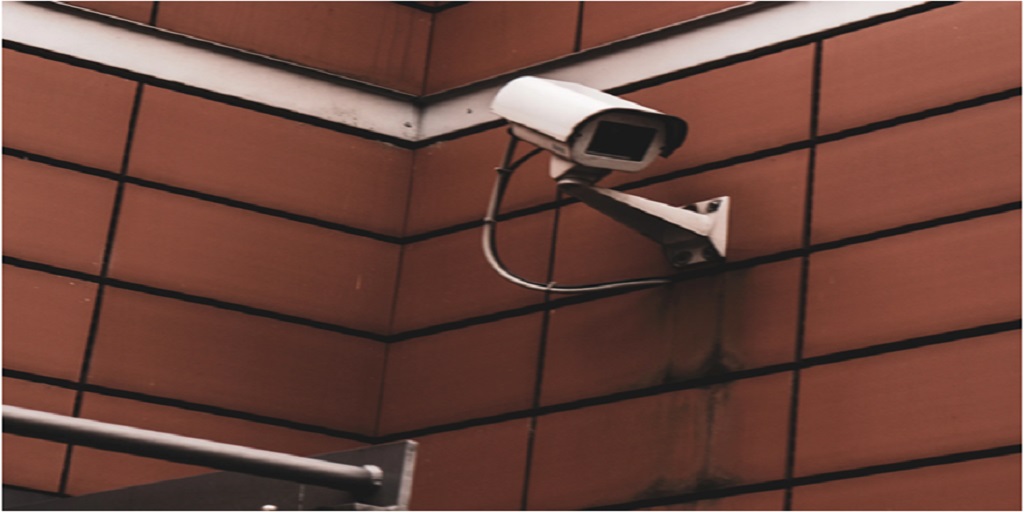Improving employee efficiency is a key goal for any organization. It not only helps to increase productivity but also ensures that the employees are performing at their best. There are several ways to improve employee efficiency, ranging from simple changes in the workplace to more complex strategies.
One of the most effective ways to improve employee efficiency is to provide them with the necessary tools and resources. This can include everything from training and development programs to the latest technology and equipment. By investing in these resources, employees are better equipped to perform their job duties and can do so more efficiently.
Another way to improve employee efficiency is to establish clear expectations and goals. When employees know what is expected of them and have a clear understanding of their goals, they are more likely to be motivated and focused. This can lead to increased productivity and better overall performance.
- Setting Clear Goals and Expectations
- Providing Regular Training and Development Opportunities
- Implementing Efficient Work Processes
- Recognizing and Rewarding Performance
- Promoting Work-Life Balance
- Conclusion
Setting Clear Goals and Expectations
One of the most effective ways to improve employee efficiency is by setting clear goals and expectations. When employees have a clear understanding of what is expected of them, they are more likely to be motivated and focused on achieving their goals.
To set clear goals and expectations, managers should communicate with their employees regularly. This can be done through one-on-one meetings, team meetings, or performance reviews. During these meetings, managers should discuss the employee’s job responsibilities, performance expectations, and goals for the upcoming period.
Managers should also provide employees with the necessary resources and support to achieve their goals. This may include training, mentoring, or access to new technology or tools. When employees have the resources they need to do their jobs, they are more likely to be productive and efficient.
In addition, managers should provide regular feedback to their employees. This feedback should be specific, timely, and focused on both positive and negative aspects of the employee’s performance. By providing regular feedback, managers can help their employees stay on track and make necessary adjustments to improve their performance.
Many companies have started to use UK based online employee management software or other country-based staff management software to streamline this process. These platforms enable interactive reviews, allowing managers and employees to collaborate effectively on goal-setting and performance tracking. Furthermore, the use of 360-degree feedback ensures a more well-rounded evaluation, helping employees understand their strengths and areas for improvement while fostering a culture of continuous development.
Overall, setting clear goals and expectations is an essential part of improving employee efficiency. When employees have a clear understanding of what is expected of them and have the necessary resources and support to achieve their goals, they are more likely to be productive, efficient, and motivated.
Providing Regular Training and Development Opportunities
One of the most effective ways to improve employee efficiency is by providing regular training and development opportunities. This can include both formal training sessions and informal learning opportunities.
Formal training sessions can be conducted in-house or through external training providers. They can cover a wide range of topics, from technical skills to soft skills such as communication and leadership. These sessions can be delivered through classroom-style training, online courses, or a combination of both.
Informal learning opportunities can include on-the-job training, mentoring programs, and job shadowing. These opportunities allow employees to learn new skills and gain valuable experience while working on real projects.
Regular training and development opportunities can have a number of benefits for both employees and the organization. For employees, it can improve job satisfaction, increase motivation, and help them stay up-to-date with the latest industry trends and best practices. For the organization, it can lead to increased productivity, better employee retention, and a more skilled workforce.
To ensure the success of training and development programs, it is important to identify the specific needs of employees and tailor the programs accordingly. This can be done through employee surveys, performance evaluations, and feedback from managers.
Overall, providing regular training and development opportunities is a key strategy for improving employee efficiency and achieving organizational success.
Implementing Efficient Work Processes
Implementing efficient work processes is an essential step in improving employee efficiency. By streamlining workflows and eliminating unnecessary steps, employees can work more productively and complete tasks more quickly. Here are a few ways to implement efficient work processes:
1. Analyze Current Processes
The first step in implementing efficient work processes is to analyze current workflows. This involves identifying each step in a process and determining which steps are essential and which can be eliminated. By doing this, managers can identify bottlenecks and inefficiencies and develop a plan to address them.
2. Automate Repetitive Tasks
Automating repetitive tasks is another way to improve efficiency. By using software or other tools to automate tasks such as data entry or report generation, employees can focus on more complex tasks that require human input. This can help reduce errors and improve overall productivity.
3. Provide Training and Resources
Providing training and resources is also important when implementing efficient work processes. Employees need to understand how to use new tools and software, as well as how to follow new workflows. Providing training and resources can help ensure that employees are comfortable with new processes and can work more efficiently as a result.
4. Monitor Progress
Finally, it is important to monitor progress when implementing efficient work processes. This involves tracking key metrics such as productivity, quality, and customer satisfaction. By monitoring progress, managers can identify areas that need improvement and make adjustments as necessary.
5. Keep An Eye On Efficiency
CCTV that records footage for 30 days can be used as a tool to monitor employee performance and behavior. By reviewing footage, employers can identify areas where employees may be wasting time or not following proper procedures. This information can then be used to provide targeted training or coaching to improve employee efficiency.
Additionally, the presence of CCTV can act as a deterrent to employees engaging in behaviors that are not productive or may be harmful to the business. Knowing that their actions are being monitored can encourage employees to stay on task and follow proper procedures.
You typically find that one of the biggest problems that employees have is that their needs are not being met. If this is the case, business efficiency will decline as the employee is not able to do the job to the correct standard. So, you should be searching queries such as Internet near me to find the best providers to ensure the Internet is not always cutting on and off. This is just one quick example, there are other needs that need to be met in order for employees to do their job, and provide an efficient service for your business.
Implementing efficient work processes can take time and effort, but it can ultimately lead to significant improvements in employee efficiency and productivity. By analyzing current workflows, automating repetitive tasks, providing training and resources, and monitoring progress, managers can create a more efficient and productive workplace.
Recognizing and Rewarding Performance
Recognizing and rewarding employee performance is a key factor in improving efficiency. When employees feel valued and appreciated, they are more likely to put in extra effort and go above and beyond their job requirements. Here are a few ways to recognize and reward employee performance:
1. Public Recognition
Public recognition is a simple yet effective way to show appreciation for an employee’s hard work. It can be as simple as a shout-out during a team meeting or a mention in a company newsletter. This not only boosts the morale of the employee but also motivates others to work harder.
2. Incentives
Recognizing and rewarding performance is not just about bonuses or public accolades; introducing tangible tokens of appreciation like glass awards can significantly enhance the sentiment. These awards serve as a lasting reminder of achievement, contributing to a motivated and effective team.
Incentives are a great way to reward employees for their performance. This can include bonuses, gift cards, or even extra time off. The key is to make the incentives meaningful and relevant to the employee.
3. Professional Development Opportunities
Providing professional development opportunities is another way to recognize and reward employee performance. This can include attending conferences or workshops, taking online courses, or even providing mentorship opportunities. Not only does this help the employee grow professionally, but it also benefits the company in the long run.
4. Flexibility
Flexibility is highly valued by employees, and offering flexible work arrangements can be a great way to recognize and reward performance. This can include flexible hours, telecommuting options, or even a sabbatical. This not only shows that the company values the employee’s hard work but also helps them maintain a healthy work-life balance.
In conclusion, recognizing and rewarding employee performance is crucial in improving efficiency. By providing public recognition, incentives, professional development opportunities, and flexibility, companies can show their employees that they are valued and appreciated.
Promoting Work-Life Balance
One of the most effective ways to improve employee efficiency is by promoting work-life balance. When employees are able to balance their personal and professional lives, they are more likely to be happy, motivated, and productive at work. Here are a few ways employers can promote work-life balance:
- Flexible Schedules: Employers can offer flexible schedules, allowing employees to work from home or adjust their work hours to fit their personal needs. This can help employees better manage their time and reduce stress.
- Paid Time Off: Employers can offer paid time off, including vacation days, sick days, and personal days. This allows employees to take time off when they need it without worrying about losing pay.
- Wellness Programs: Employers can offer wellness programs, such as gym memberships, yoga classes, or mental health resources. These programs can help employees stay healthy and reduce stress.
- Clear Expectations: Employers can set clear expectations for employees, including deadlines and work hours. This can help employees better manage their time and reduce the need for overtime.
By promoting work-life balance, employers can create a positive work environment that fosters productivity and employee satisfaction.
Conclusion
In conclusion, there are various ways to improve employee efficiency in the workplace. By implementing the strategies discussed in this article, organizations can enhance productivity, reduce costs, and achieve their goals more effectively.
One of the most effective ways to improve employee efficiency is by providing regular training and development opportunities. This can help employees acquire new skills, improve their performance, and stay motivated. In addition, organizations can improve employee efficiency by promoting a positive work culture, providing regular feedback and recognition, and ensuring that employees have the necessary tools and resources to perform their jobs effectively.
Another important factor that can improve employee efficiency is effective communication. By ensuring that employees are aware of their roles and responsibilities, providing clear instructions and guidelines, and encouraging open communication, organizations can minimize confusion, errors, and misunderstandings.
Finally, organizations can improve employee efficiency by leveraging technology and automation. By automating routine tasks, streamlining processes, and providing employees with access to the latest tools and software, organizations can reduce errors, improve accuracy, and enhance productivity.
Overall, improving employee efficiency requires a holistic approach that takes into account various factors such as training, communication, culture, and technology. By implementing the strategies discussed in this article, organizations can create a more efficient and productive workplace that benefits both employees and the organization as a whole.



